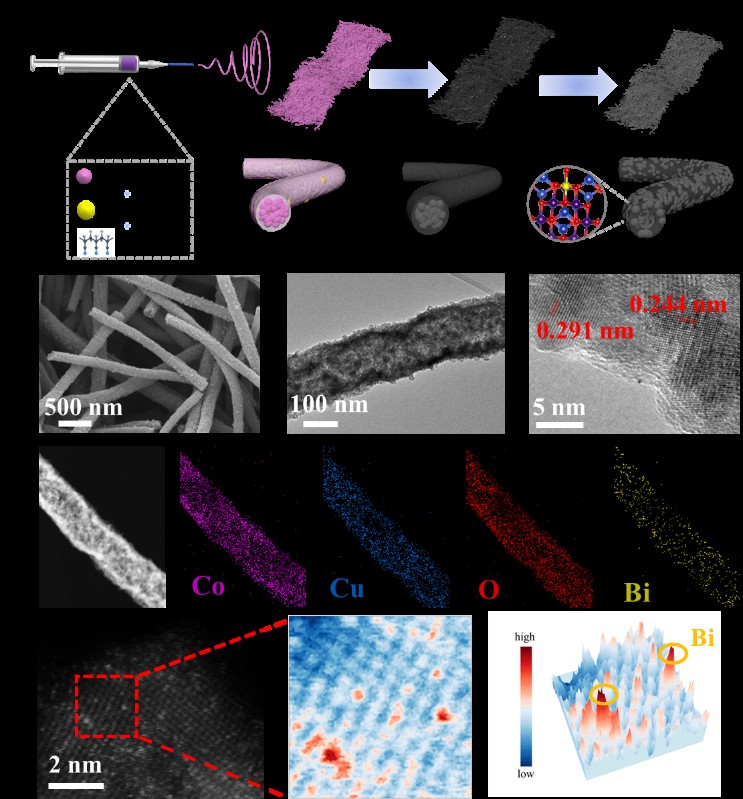Recently, Associate Professor Li Yayun's team from the College of Materials Science and Engineering published a research paper titled "Bi1-CuCo2O4 Hollow Carbon Nanofibers Boosts NH3 Production from Electrocatalytic Nitrate Reduction" in the Nature Index journalAdvanced Functional Materials(Impact Factor: 18.5, CAS Tier 1). The first author of the paper is Lin Hexing, a 2022 master's student, with Associate Professor Li Yayun and Associate Researcher Wei Jinshan serving as co-corresponding authors. Shenzhen University is the sole completing institution.

Ammonia, as a hydrogen storage carrier with high energy density, is in widespread demand globally. The electrocatalytic nitrate reduction reaction (NO3RR) has opened a new pathway for green ammonia production. In this study, atomic-level bismuth (Bi) was introduced into CuCo₂O₄hollow carbon nanofibers to replace Co sites. This approach not only increased the oxygen vacancy concentration but also precisely adjusted the Fermi level of Cu active sites, effectively optimizing the electronic properties of CuCo₂O₄active sites. Meanwhile, the unique hollow structure enhanced mass transfer, and the synergistic effect of these two factors significantly boosted the catalytic activity of the electrocatalyst for NO3RR. In a neutral electrolyte environment, the maximum Faraday efficiency of Bi₁-CuCo₂O₄reached 95.53% at -0.8V, with an NH₃production rate of 448.74μmol h⁻¹cm⁻². The Zn-NO₃battery system constructed with Bi₁-CuCo₂O₄exhibited stable performance, achieving an FE of 97.76% at a current density of 8 mA cm⁻². This highlights the broad application prospects of Bi₁-CuCo₂O₄hollow carbon nanofibers in future energy storage and conversion, promising new breakthroughs and advancements in the field.
Article link: https://doi.org/10.1002/adfm.202409696
The above research was supported by the National Natural Science Foundation of China General Program, the Guangdong Natural Science Foundation General Program, and the Shenzhen Basic Research General Program.
Editor: Zhang Xiaoying
Reviewers: Wang Dong, Wang Lei
